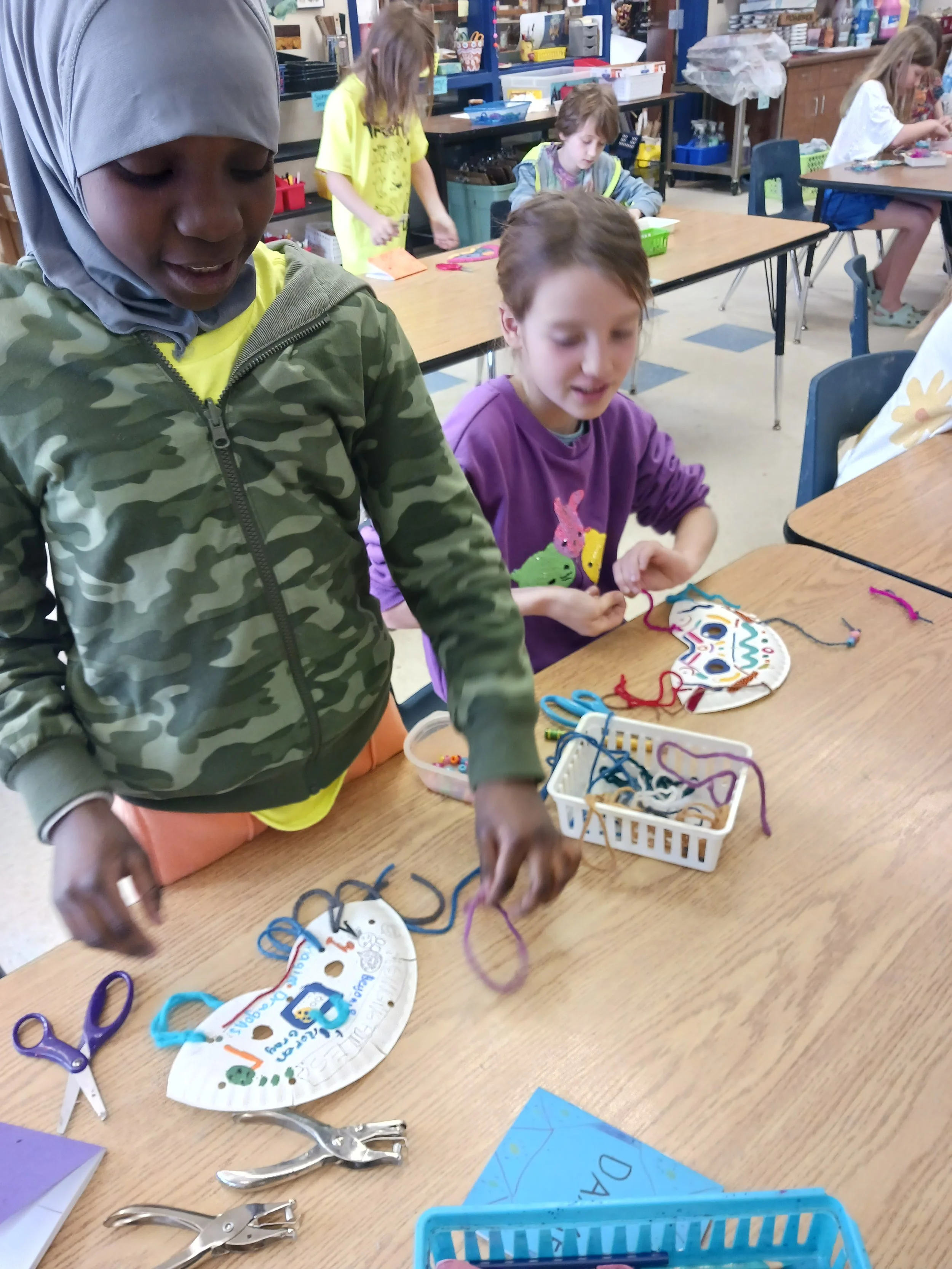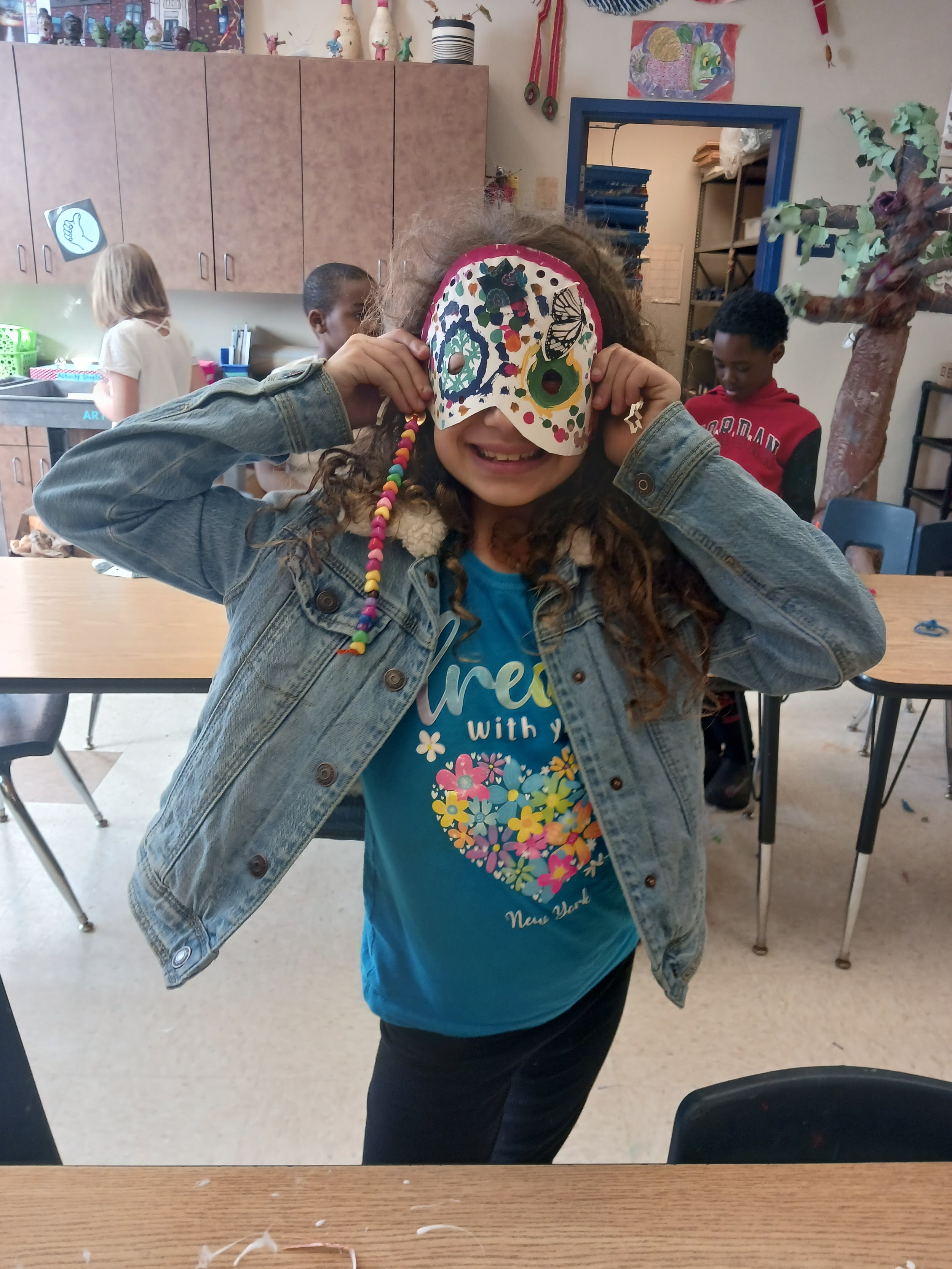Primary Education Student Teaching Overview
My time student teaching in Elementary School was spent at Chase Street Elementary (soon to be name Jonnie Lay Burks Elementary School). Working with my mentor teacher, Krista Dean, I developed a unit plan with the third grade focused on the artistic work of the artist Nick Cave. Using paper plates, fabric collage, beads, paint, oil pastels, and other creative processes, the third graders created work which highlighted their creativity and their internal emotions. One thing that I learned from spending time in Elementary schools is that the focus on student emotional wellbeing is very important. Coming out of the COVID-19 pandemic, many elementary students have had a more chaotic education experience. They have had to navigate both virtual and tangible spaces, adjust from reduced class settings to encountering more of their peers. As a result, students having the ability to map their internal state and experiences is a powerful way for them to connect to their lived experiences.
Classroom Management and Differentiation at Chase Street
Because of the diversity within Chase Street, a high amount of classroom management strategies were employed to ensure that students got the most out of their time in the art room. Krista Dean emphasized starting the day defining prominent classroom expectations, that is, ensuring students stayed in their seats, kept their volume levels down, raised their hand when they needed something, and took care of the classroom and classroom supplies. If a student diverged from classroom expectations, they could be gently reminded that their behavior within the classroom was not school appropriate. After going over classroom expectations, students were presented with new information for around 4-6 minutes before the classroom activity. To minimize confusion, materials for each lesson were spread on the back table. During clean-up, students were presented with each step of the clean up process, and were expected to finish by the end of the clean-up song. At the end of class, different expectations were reviewed; did students enter the classroom respectfully? Did they listen during classroom instruction? Did they work hard? And finally, did they clean up? If students did all these things, they received a positive “art note” they could bring back to their classroom teacher for reward.
Through talking students through the procedure for making art and expectations, I was able to fulfil InTASC Standard 3, in which I worked with Krista Dean to learn and create an environment in which students became self-motivators who were focused on positive social interaction and rewarding students for positive classroom behavior.
Classes at Chase Street were inclusive to students with IEPs and special education considerations. As a result, I realized early into my time working with elementary students that differentiation strategies were important. Krista Dean taught me to design unit plans thinking about the needs of the students I was teaching. As a result, projects were broad enough that a wide variety of work was acceptable, but structured enough that students were supported as they made artistic progress. Allowing students to learn different materials and choose what they were using is another method of differentiation. Allowing students to work with materials which they were interested in led to them feeling comfortable as they created art.
Unit Plan Project
As part of my student teaching experience I developed a Unit Plan which focused on the work of Nick Cave through students making masks. This unit was sculptural, as the third graders had mainly focused on 2D work that year. Strategically, the unit plan project was a way to focus on student’s mental health; they were asked to focus on what others did not perceive about them, and put it onto their “Sound Mask”. Throughout the course of the project, students learned new vocabulary, and about collaging art-making materials, similar to what Nick Cave did.
Throughout my time at Chase Street Elementary School, I focused on InTASC Standard 7, which focused on developing instruction that works for every student. Relating to discussing differentiation from earlier, I found that my differentiation had to focus on meeting the needs of every student within the classroom. As a result, students were drawn to different materials and different forms of creating when working on their masks. Their were some students which took the task more literally and incorporated aspects of nature to show that they were a nature lover, while others took the assignment more abstractly through creating a dark colored mask to show their serious side. In the classroom, every mask was a reflection of the student’s unique personality.
Moving into the Future
My time at Chase Street Elementary gave me the tools I need to work within the Primary Education setting. Working with kids from Pre-K to 5th grade, I had the opportunity to experience a vibrant diverse school. I had the opportunity to teach all five-hundred Chase Street Tree Frogs, and learn from each student. I am grateful for learning differentiation and classroom management strategies, and having the opportunity to learn from a mentor teacher with 20+ years of experience.
A student in the process of decorating her Nick Cave Sound Mask. Here, she is experimenting with adding yarn to her mask.
A student at Chase Street showing off her Nick Cave Sound Mask
A array of finished Nick Cave Sound Masks. Notice the wonderful diversity; many students took the project different ways, and what is left is a fantastic collage of texture and color.
Nick Cave explained,
”I was inside a suit. You couldn’t tell if I was a woman or man; if I was black, red, green or orange; from Haiti or South Africa. I was no longer Nick. I was a shaman of sorts.”


